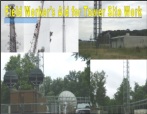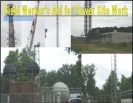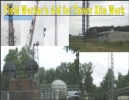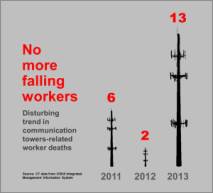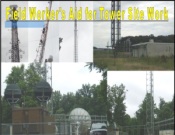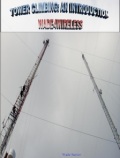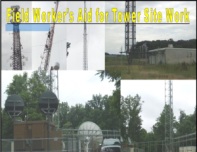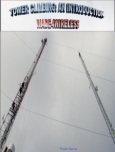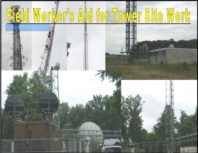Podcast: Play in new window | Download | Embed
Subscribe: Apple Podcasts | RSS
One thing that has been happening in 2015 is the indoor small cell growth. There are many vendors and OEMs that have successfully deployed indoor small cells. Whether it’s in a stadium or in an office or in a home, there are many installed. Indoor small cell deployment has been booming.
To give you some background, the indoor small cells go through extensive lab testing with the carriers before they ever touch the network. They need to be approved. You see the carriers, or most of them, treat the network like they would a delicate flower making  sure that nothing touches it before that device is tested, approved, and does not hurt the network. When you see all of the devices on the network you begin to realize how much work it is to test each device before it is allowed to work on that carrier’s network. I don’t blame them one bit, because if a site goes down or if the network is affected it could have devastating effects on service, and we all want 100% uptime, or at least 99.999% uptime.
sure that nothing touches it before that device is tested, approved, and does not hurt the network. When you see all of the devices on the network you begin to realize how much work it is to test each device before it is allowed to work on that carrier’s network. I don’t blame them one bit, because if a site goes down or if the network is affected it could have devastating effects on service, and we all want 100% uptime, or at least 99.999% uptime.
So, back to the indoor small cell. If a home needs a small cell then it is very small and it would install like a Wi-Fi router with more testing. It will need power. You will need to plug it into a port that connects to the Internet. Then it should configure automatically. This is where the carrier will have a server that it will seek out and assign an IP and configure it to go live. This is a dedicated server normally but for the larger small cells it should be part of the SON, Self Organizing Network server. I will go into that in a future post.
So a home node or a small business node is pretty straight forward to connect and install, really anyone should be able to do it. So let’s get past that and move onto the bigger installations, ones that someone would pay you for.
So for enterprise, it may be as simple as installing a few indoor small cells that connect directly to the router, they should go right in and should auto configure. Just make sure that the RF is working and also make sure that you test each cell with a device before you leave.
For larger installations you may be installing a BBU in a telco room then connect to a router. You may connect to the company’s router or the carrier may want to install their own fiber and router. Make sure you know where you are connecting the backhaul because if you are connecting into the company’s router you may need support from their IT group to connect to the carrier. This could cost you time because they will need to know what to do to connect to the carriers server remotely. You will need to know how to interface to the router. If you are connecting the BBU to the carriers router and they are running in their own backhaul, then you need to meet with the group delivering the fiber and make sure that it’s tested and connected properly. Know your scope!
Now that the backhaul is taken care of you are ready to work with the fronthaul, the link from the BBU to the radio head.
First, does the small cell or radio head have the PoE option, (Power over Ethernet)? Or do you need an outlet for each unit? If you have to run power to each unit, then you need to have an electrician to run power or you need to run extension cords. This question is very important. It will change the scope of the job if you need to run power everywhere.
If you have PoE then make sure that your router that you are connecting not only supplies PoE but the power matches up. You see there is high power and low power on PoE ports. Make sure you know which one you need and that the router and small cell align with what they need. If you are connecting to the BBU then you may be able to run “home runs” to the BBU if it’s practical, but in most cases there should be a router on each floor. This should all be worked out in the initial site survey and should be worked out in the design prior to the installation. Again, it comes down to knowing your equipment and what you’re connecting to.
If you need to run power, then it adds so much cost. I can’t believe how many indoor small cells do not have PoE, it seems stupid. However, some small cell OEMs don’t get it and they want you to run extension cords everywhere. Make sure you know what you are installing. If you were trained on the equipment and the design was done properly then you should be ready to deploy properly and all of this should have been considered.
So whomever is doing the design will need to make sure that document where to place each unit, how to direct the antenna, and get the installer the document. Placement should be determined by a preliminary RF design. I have seen where many companies wing it, but if you are working with a professional group they should have some type of design prepared to cover all the dead spots and know what the walls are made of so maybe they can penetrate the drywall but have issue with the block walls. Remember that you don’t want to interfere with yourself so the units need to be setup properly and if the carrier has a good SON system then they should know exactly where their neighbors are at. The neighbor list is very important so it matters where each cell is placed, just like Macro. Also, that is why many indoor small cells will not be placed too close to an outside window or wall, because they don’t want to interfere with the Macro network. Remember that it’s a Het Net so they all need to play well together. Many issues can be resolved in the design. Optimization will play a part to make sure the system is working together.
Antenna direction matters, especially since many of these have directional antennas and they will need to point in a specific area. The RF team should know where the loading is expected when they place the small cells and specify the direction of the antennas. So pay attention to the design. Understand where the unit is mounted and where to point the antenna.
You should also have a good idea about noise. I don’t mean RF noise, but actual fan noise in this case. Yes, that’s right, if you hang a small cell with a noisy fan in a quiet office, people will complain. It is good to know if the small cell has a quiet fan or no fan at all so that you know if it’s going to disturb the office workers. They want coverage but they also want to be able to talk on the phone without shouting.
If you are installer and you are putting in for a customer who does not own the building, then make a point to talk to the landlord. If you are mounting hardware to the ceiling or drilling through any walls, make sure you have permission to do so. You don’t want the landlord to badmouth you because the office manager said it was OK. It is just a thought and may not matter to you, but it could cause you problems if you have more customers in that building.
One thing you need to understand is the permitting and zoning. It may be no big deal but it’s a good idea to understand if you can just go in and mount the hardware with the landlords blessing or if there are permitting issues with the local municipality. Usually the landlord will know what to do.
I think you should also realize that safety matters here, you need to be aware of ladder safety or lift safety, depending on what your  installation will need. You also must be aware that you may be working around people. If you can work after hours then you could move freely through the building but chances are good that you will be working during business hours. So make sure the people in the office are aware that they may need to work around you for the day you are there.
installation will need. You also must be aware that you may be working around people. If you can work after hours then you could move freely through the building but chances are good that you will be working during business hours. So make sure the people in the office are aware that they may need to work around you for the day you are there.
This is a very high level overview here. Don’t forget that you will have to test the coverage at some point and chances are good that they will ask the installer to not only install, but to power up and test the units. So make sure you have time in there to do some commissioning and testing. I know that they should do a complete optimization and testing once live but I think that most time they will have you power up, make sure it’s talking to the system by calling the NOC, and then verifying it works. They will probably give you a test device to walk around the building and make sure the coverage and download speeds are good. This will take time, chances are, depending on how many APs you put in, it could take 30 minutes to several hours. Make sure you know what is expected of you.
Be smart, be safe, and pay attention. I hope this brings you closer to creating solutions for the customer.
Interested in keeping up with what I have been doing? Then subscribe to my newsletter, give me feedback to tell me about what you want to learn about small cells or deployment.














